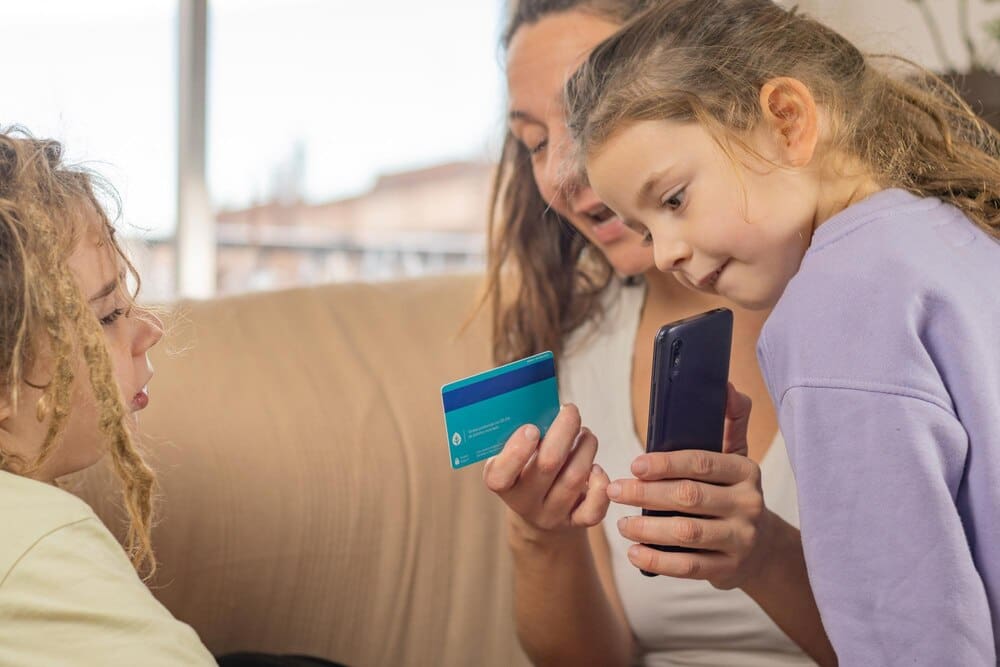In an increasingly cashless world, the traditional piggy bank is being replaced by sophisticated FinTech applications designed to teach children and teenagers crucial financial literacy skills. A growing number of digital platforms are now offering specialized debit cards, savings goals, and even entry-level investing accounts for minors, all managed through a smartphone. These apps, such as Greenlight, GoHenry, and Step, aim to provide hands-on, real-world financial education, giving parents the tools to guide their children through earning, saving, spending, and investing in a controlled, digital environment. The core purpose is to equip the next generation with the modern money management skills necessary to navigate a complex digital economy long before they open their first independent bank account.
The Digital Shift in Financial Education
For generations, financial lessons for kids were tangible. An allowance was a handful of coins and bills, saving meant dropping them into a jar, and spending involved physically handing cash to a cashier.
However, the economy young people are inheriting is fundamentally different. It’s a world of tap-to-pay, online subscriptions, peer-to-peer transfers, and digital investing platforms. Cash is becoming a rarity, making abstract concepts like account balances and digital transactions difficult to grasp without the right tools.
This is where financial technology steps in. These apps bridge the gap between abstract digital money and concrete, learnable experiences. They provide a safe, walled-garden environment for kids to practice financial habits with real, albeit parentally-controlled, money.
By simulating the adult financial ecosystem, these platforms help demystify banking. They introduce concepts like interest, budgeting, and even market fluctuations in a digestible, age-appropriate format, setting a foundation for future financial wellness.
Top FinTech Apps for Younger Kids (Ages 6-12)
For elementary and middle school-aged children, the best apps focus on the foundational pillars of money management: earning, saving, spending, and giving. They often use gamification and clear visual goals to make learning engaging.
Greenlight
Greenlight is arguably one of the most comprehensive platforms in this space, functioning as an all-in-one money app for families. At its core, it provides a debit card for kids that parents manage from their own app.
Parents can set up automated allowances or tie payments to a chore list within the app. Its standout feature is the granular control it offers, allowing parents to set store-level spending limits. For example, a parent could approve spending at a local bookstore but block transactions at a video game store.
Greenlight also introduces the concept of earning interest, with a unique “Parent-Paid Interest” feature where parents can set an interest rate on their child’s savings, powerfully illustrating the benefit of saving. For older kids, the Greenlight + Invest plan allows them to research and invest in fractional shares of stocks and ETFs with parental approval on every trade.
GoHenry
GoHenry is another leader in the youth banking space, distinguished by its strong focus on education through gamification. Each child gets a debit card with their name on it, which parents can fund and monitor.
The app’s signature feature is “Money Missions,” a series of short, animated videos and quizzes that teach specific financial topics. As a child completes a mission on topics like saving, budgeting, or borrowing, they unlock new levels and earn points, making the learning process feel like a game.
Parents can set up regular allowance payments, create paid tasks, and establish rules for where and how much their child can spend. The app also makes it easy for kids to set savings goals and for family members to contribute to those goals as gifts.
BusyKid
BusyKid takes a slightly different approach by building its entire system around the concept of a first job. It’s structured to mimic a direct deposit payroll system, where children are paid a weekly “payday” for completing assigned chores.
Once paid, the app encourages children to allocate their earnings into three categories: Save, Share, and Spend. A portion can be sent to a savings account, another can be donated to a selection of charities directly through the app, and the rest is loaded onto a prepaid spending card.
A key differentiator for BusyKid is its early introduction to investing. With as little as $10, and with parental consent, a child can use their earnings to buy fractional shares of real stock in well-known companies, providing a tangible connection to the market.
Leveling Up: The Best Apps for Teens (Ages 13-17)
As kids enter their teenage years, their financial needs become more complex. They might get a part-time job, start driving, and spend more time with friends independently. The best apps for this age group offer greater autonomy while still providing a safety net and introducing more advanced financial tools.
Step
Step is designed specifically for teenagers and positions itself as the ideal first banking experience. Its primary product is a free, FDIC-insured bank account with no monthly fees, which is a major draw for many families.
The most significant feature of Step is its secured spending card. It functions like a debit card, preventing teens from overspending, but it reports to all three major credit bureaus like a credit card. This allows a teenager to begin building a positive credit history safely, giving them a significant advantage when they turn 18 and need to apply for student loans, car loans, or their first apartment.
Step also includes features teens expect, like peer-to-peer payments for splitting bills with friends and the ability to set up direct deposit for a paycheck, which can arrive up to two days early.
Current (Teen Account)
While Current offers banking services for adults, its teen account is a robust and popular option. It provides a debit card and an app that can be managed by both the teen and their parents.
Parents can instantly transfer money, set spending limits, block specific merchants, and receive notifications about their teen’s spending. For the teen, the app offers features that foster independence, such as direct deposit from an employer and “Savings Pods” for setting aside money for specific goals.
Current’s fee-free model for its basic teen account makes it an accessible option. It strikes a solid balance between parental oversight and the financial freedom teens need to learn and grow.
Copper Banking
Copper is built exclusively for teens and focuses heavily on providing financial education within its platform. It offers a debit card and a bank account designed to teach teens how to make smart financial decisions.
The app includes short, easy-to-understand content on key financial concepts. It also automates saving through features like “Roundups,” which round up every purchase to the nearest dollar and deposit the difference into a savings goal.
Copper also facilitates easy peer-to-peer payments and allows parents to set up automated allowance transfers. Its core mission is to give teens hands-on experience with banking in a modern, intuitive interface.
What to Look For in a Kids’ Money App
When choosing a financial app for your family, several key features are essential to consider. The right platform should align with your child’s age, your family’s values, and your educational goals.
Parental Controls and Oversight
The non-negotiable feature of any youth FinTech app is robust parental controls. Look for the ability to set daily, weekly, or per-transaction spending limits. Real-time spending notifications and the power to block certain merchant categories or specific stores are also critical for ensuring a safe learning environment.
Educational Content and Gamification
A great app does more than just provide a debit card; it actively teaches. Evaluate whether the platform includes built-in lessons, quizzes, videos, or articles that explain financial concepts. Gamified elements, like those in GoHenry, can make learning sticky and more enjoyable for younger kids.
Real-World Practice with a Card
The inclusion of a physical or virtual debit card is crucial. It allows a child to experience the entire transaction process, from checking their balance before a purchase to seeing the funds leave their account. This tangible experience is what solidifies the lessons.
Security and Insurance
Ensure the funds in the account are FDIC-insured, typically up to $250,000. This protects your money in the unlikely event the financial institution behind the app fails. Also, check for card security features like the ability to easily freeze a lost or stolen card directly from the app.
Transparent Fee Structure
These apps make money in different ways. Some, like Greenlight and GoHenry, use a monthly subscription model. Others, like Step, are largely free and earn revenue from interchange fees paid by merchants. Understand the fee structure completely—are there charges for ATM withdrawals, card replacements, or instant transfers?
Conclusion: More Than an App, It’s a Conversation
Ultimately, FinTech apps for kids and teens are powerful tools, but they are not a substitute for parental guidance. Their greatest value lies in their ability to facilitate real-world learning and spark important family conversations about money. By reviewing spending habits together, discussing savings goals, or exploring a first investment, parents can use these digital platforms to instill a healthy, resilient, and responsible financial mindset. Choosing the right app is the first step in preparing your child not just to spend in a digital world, but to save, invest, and thrive in it for a lifetime.







